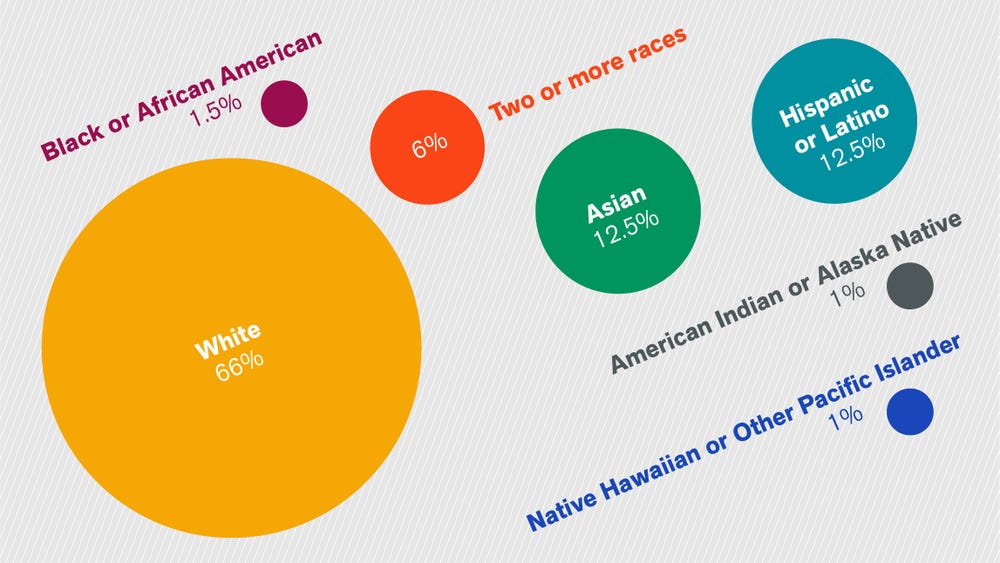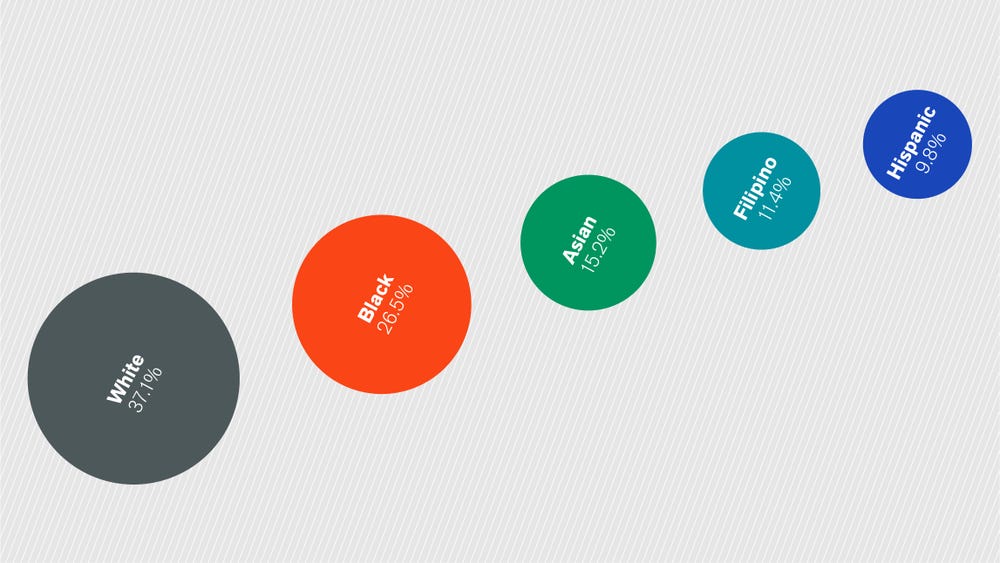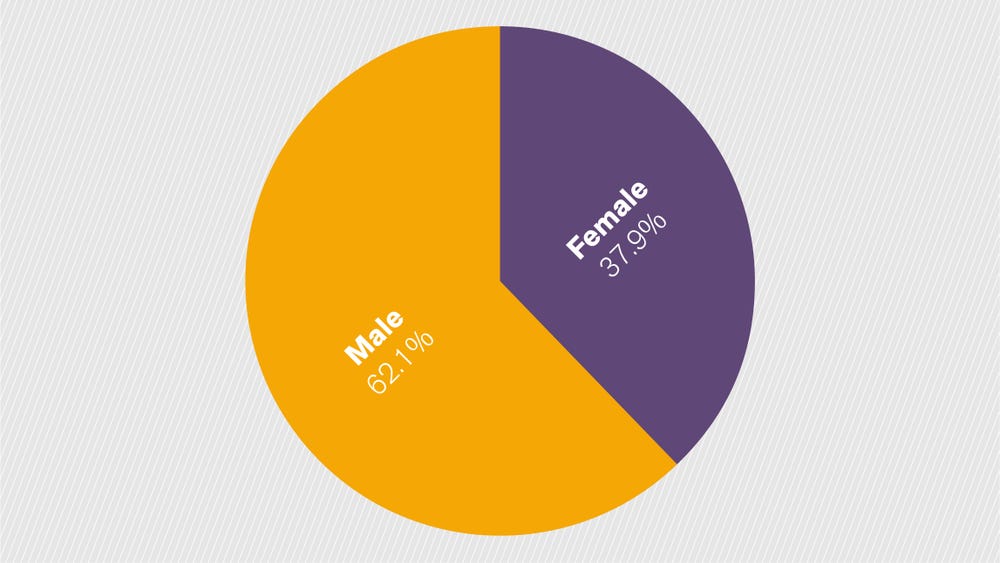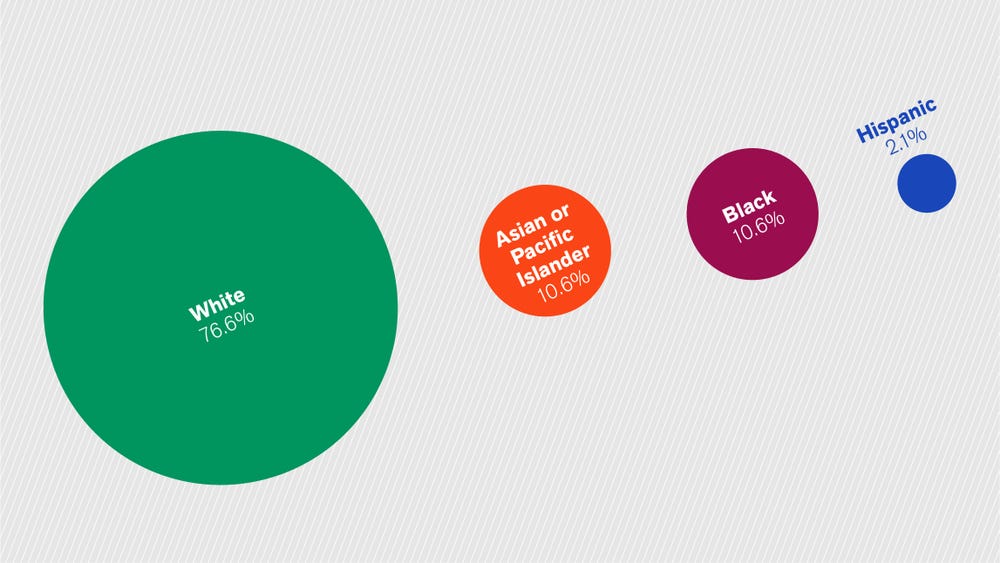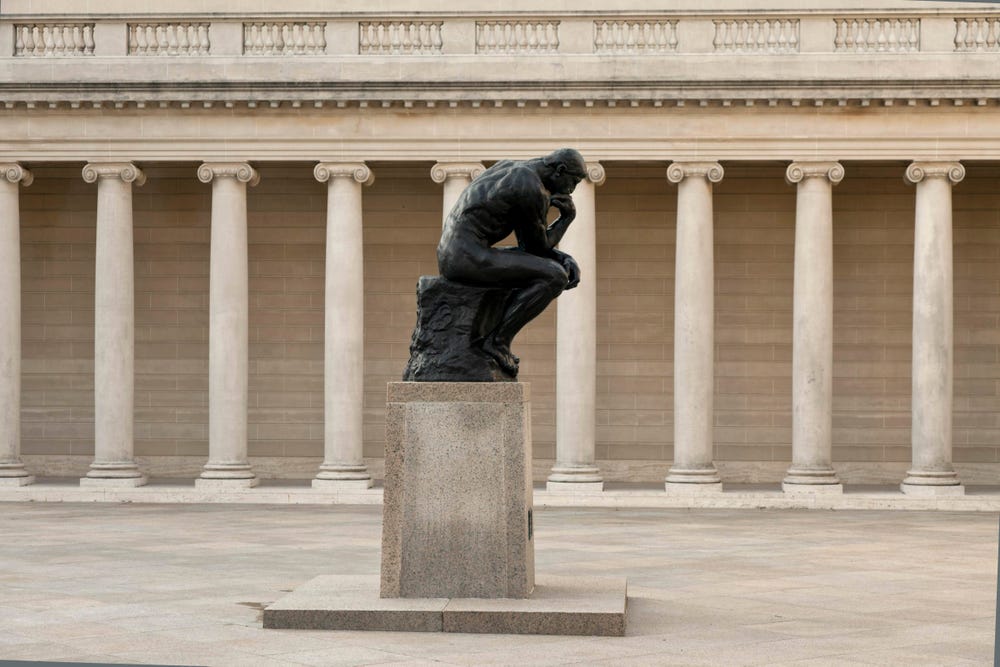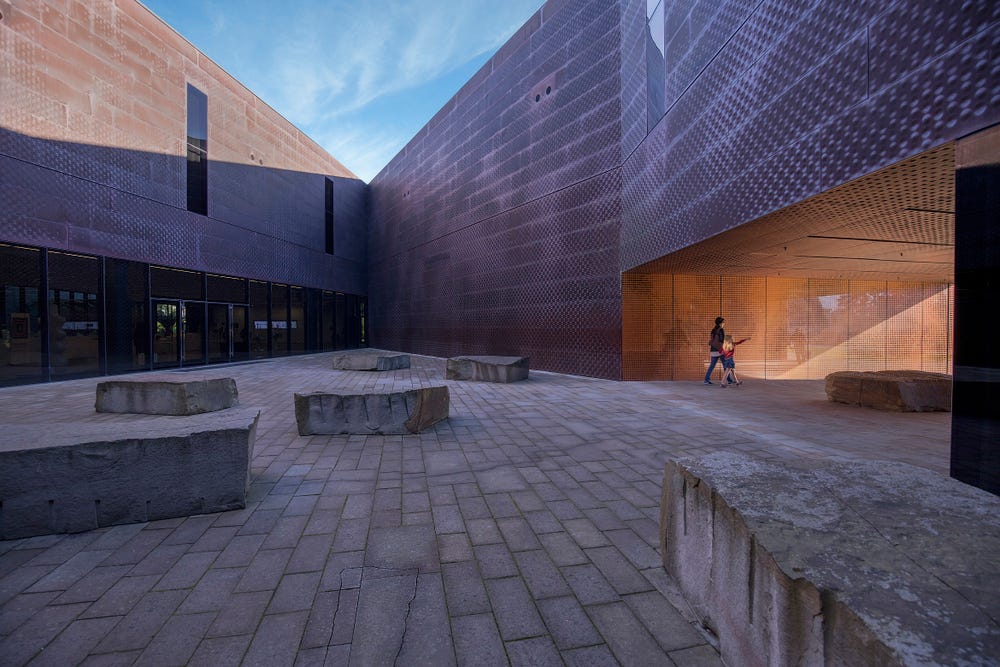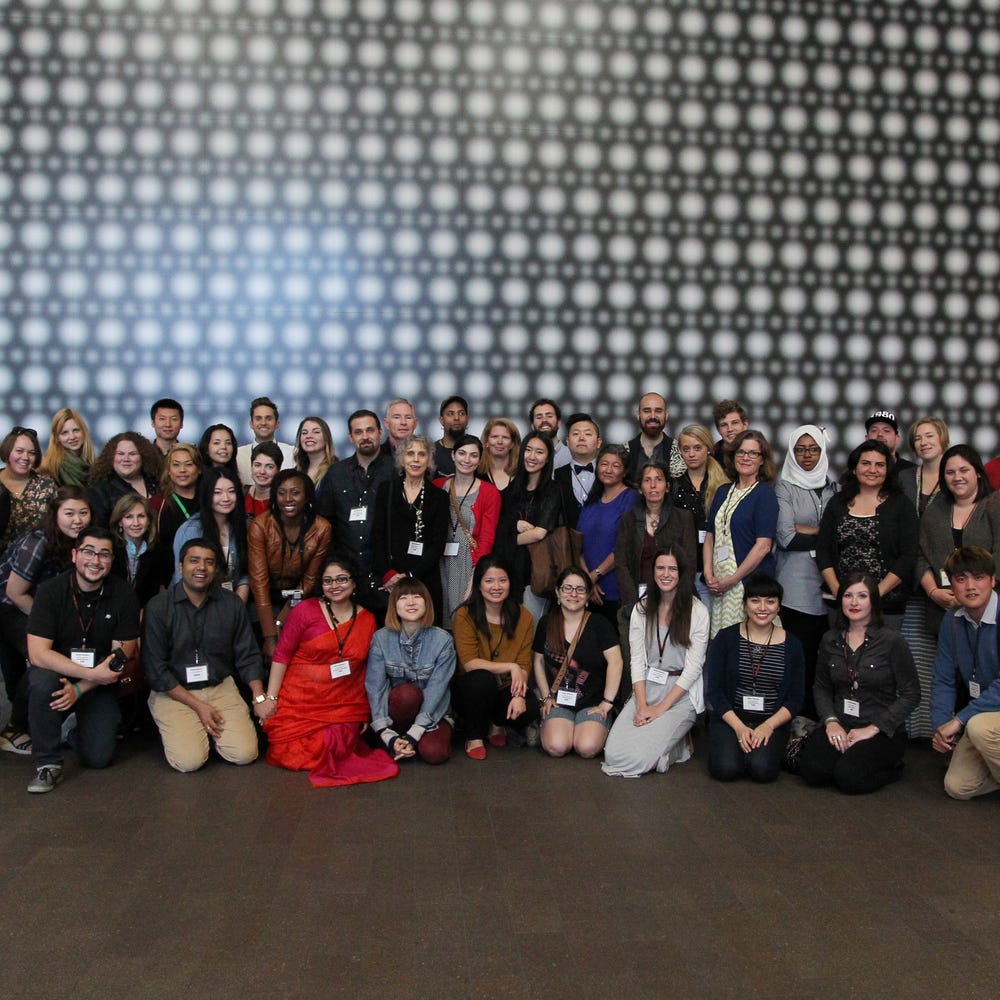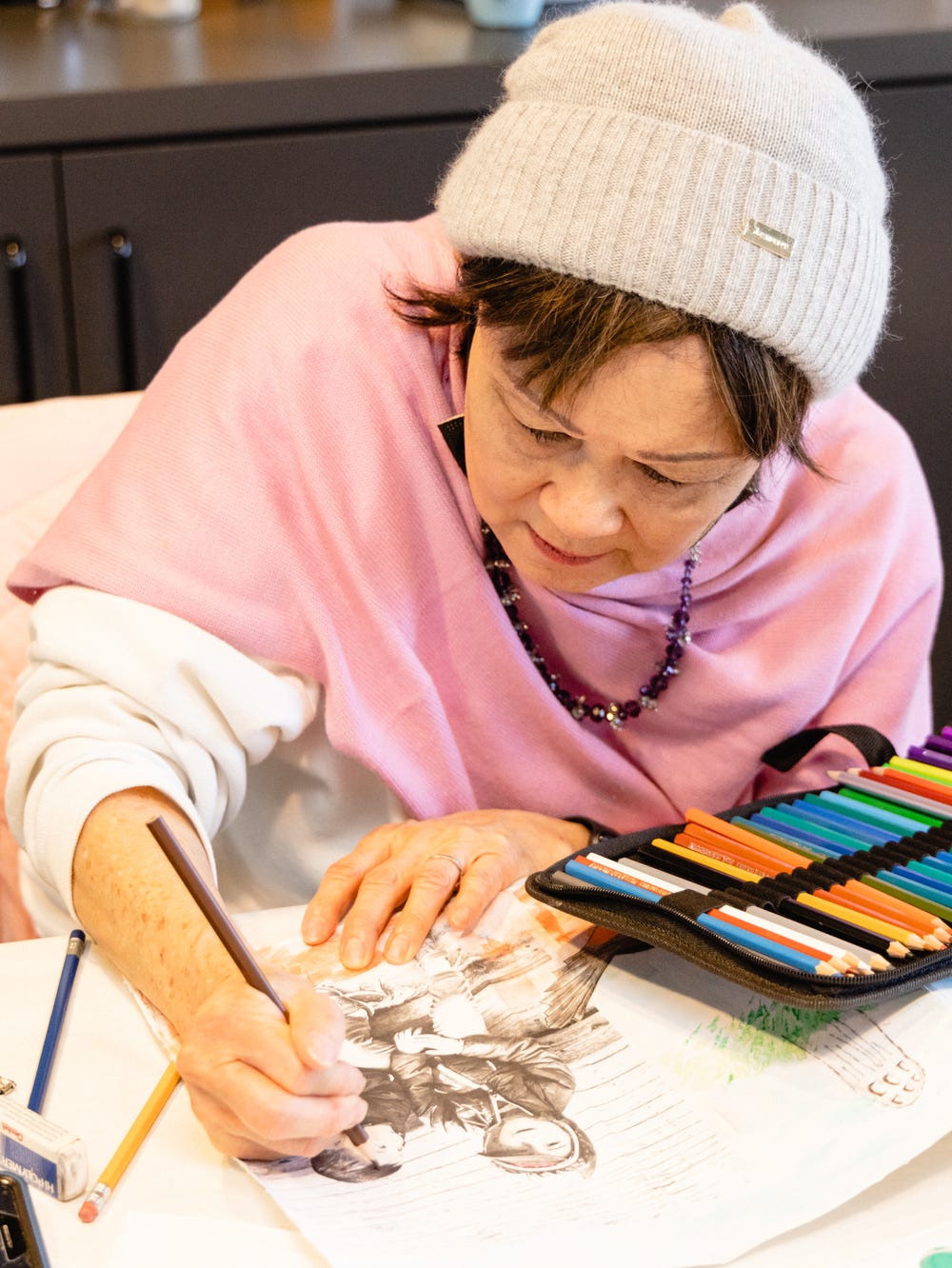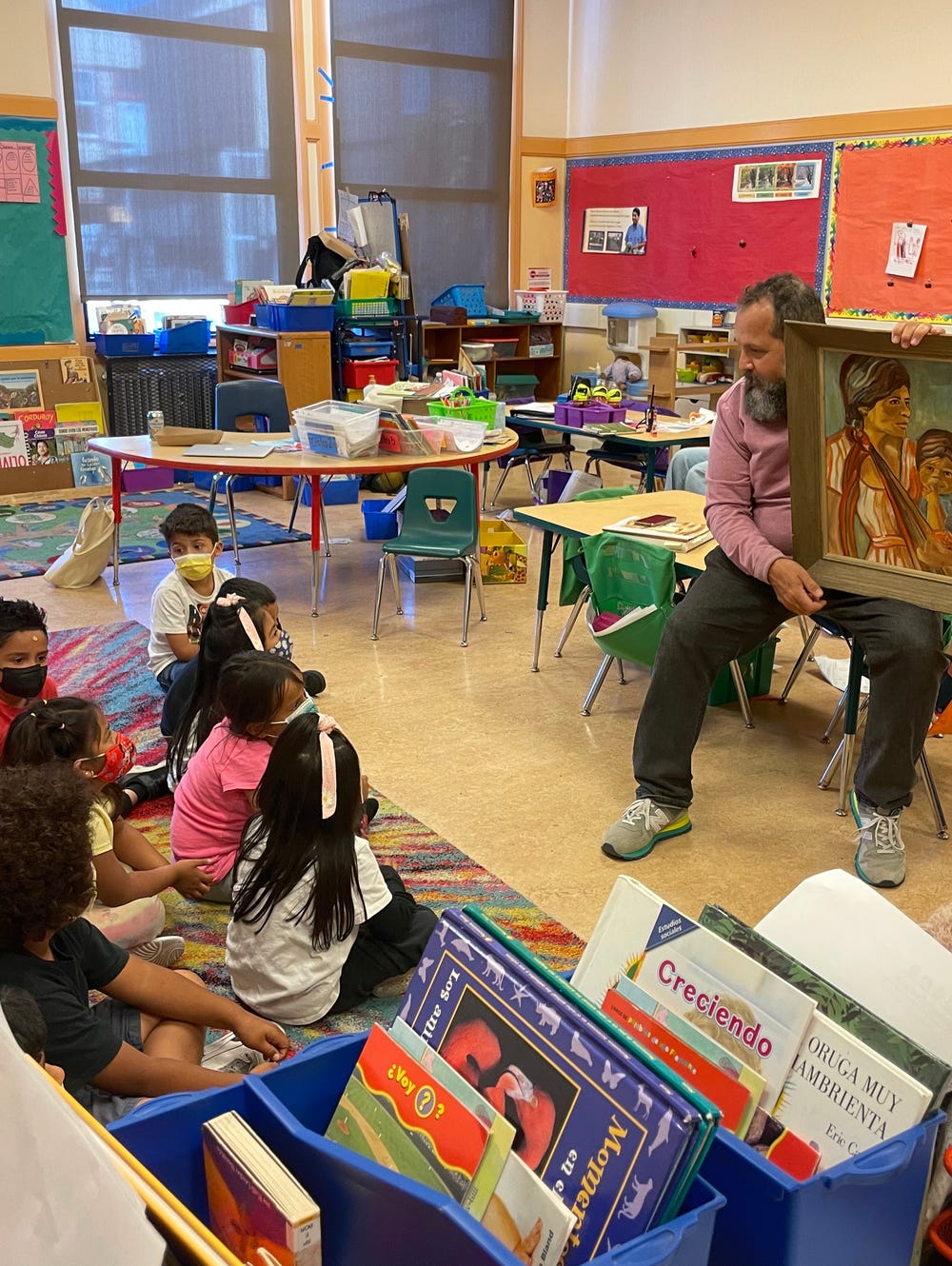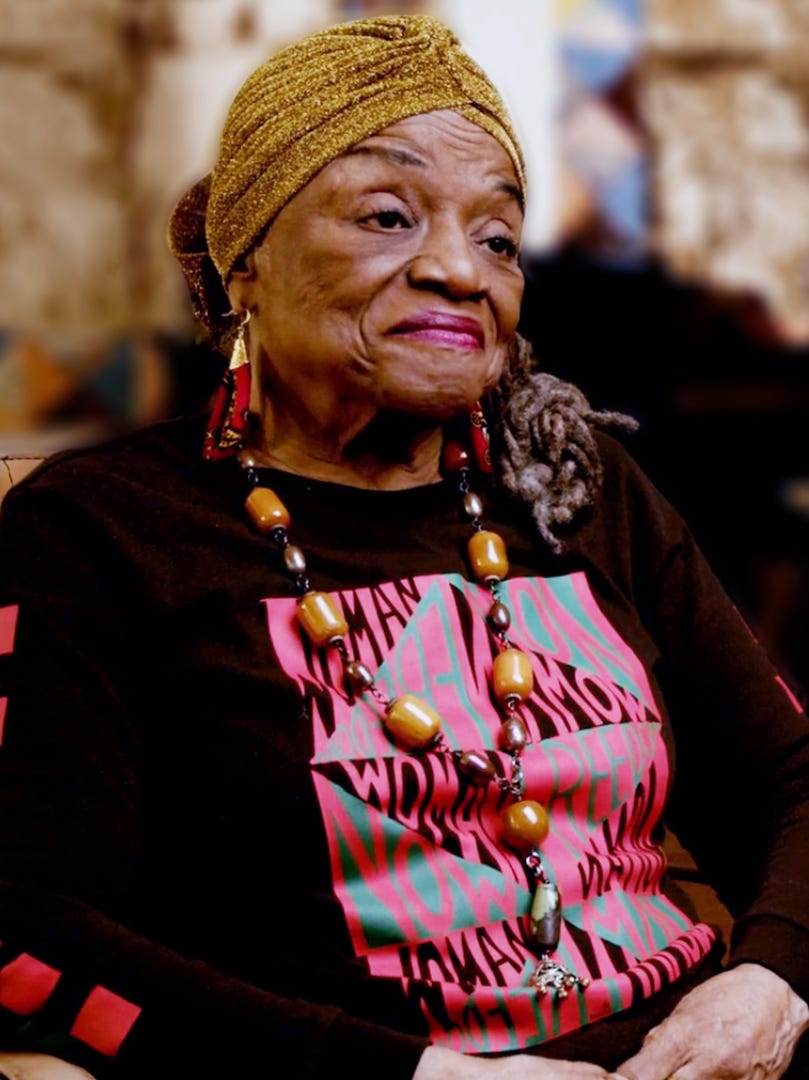FAMSF Staff Demographics
By Lindsay Ganter and Francisco Rosas, with Christine Moss and Megan Chin
January 22, 2021
As part of the Fine Arts Museums of San Francisco’s ongoing Anti-Racism work, and in an earnest desire for transparency, in this blog post we are sharing the results of our annual staff demographics reporting. This data is accompanied by a Q+A with Christine Moss, director of human resources, and Megan Chin, staffing coordinator, in which they share key takeaways and plans for implementing changes and improvements to hiring practices, as well as the Fine Arts Museums of San Francisco’s ongoing efforts to care for and support all staff. Lindsay Ganter, special projects manager, and Francisco Rosas, internal communications and content project manager, conducted the interview.
You recently conducted an analysis of staff demographics, which we are sharing in this article. Can you tell us about that process?
The Federal Office of Equal Employment Opportunity requires annual reporting on workplace demographics, which we comply with. We collect self reported demographic data, and this is not a new process. What is new, is that as an institution, in an effort to understand our workforce and to ensure we are moving toward more representative museums, we took a deeper dive into staff demographics—going beyond simply knowing what they are and taking a closer look into what types of positions we hire people. This happened last summer, both as a result of the reckoning occurring on the national stage in response to the continued violence toward Black people across the country, and to continue the work we had begun in 2017 with the Museums’ Inclusivity, Diversity, Equity and Access (IDEA) Committee, and recognizing that staff diversity (or lack thereof) is an issue we need to face.
What kind of data did you use to conduct your analysis?
Because the FAMSF staff is made up of both Civil Service (City) and private nonprofit (COFAM) employees, it was important to quantify and come to terms with the fact that we are absolutely lacking in representation of BIPOC staff in our management and industry-specific positions. Another facet to this work is the project we have undertaken with the Office of Racial Equity in the City, which in part focuses on how to create career paths and opportunities for our employees of color, and how they feel represented by the leadership of the Museums. Through this critical work, and by engaging with this key group of staff, we were able to unveil some of the major issues that seem to be holding us back: communication, listening, and resource equity.
Read our Racial Equity Action Plan for the City.
What is captured in the data shared in this post? And what is the impetus behind sharing this data?
The key takeaways of the charts are that the majority of our BIPOC representation is within our City staff, in positions that have some inherent barriers to advancement, and that our COFAM staff is severely underrepresented by people of color. It’s also apparent that women are heavily represented in our COFAM staff, and we also have a great deal of people over 40 years of age working at the Museums. Three major takeaways from this research are:
1 - Our representation of women is very high, across the whole spectrum of jobs and levels.
2 - We are severely lacking in BIPOC representation in our managerial positions, particularly in the Curatorial and Conservation Departments.
3 - We have been successful in recruiting junior BIPOC professionals, but need to ensure the culture is supportive of them, and that they are provided growth opportunities.
As for the impetus for sharing this data, in order to truly change, and to create meaningful goals, we must first recognize where we are now. It also gives us an opportunity to understand where the biggest deficits are and prioritize where we focus in terms of hiring. The transparency of sharing this information and making a public commitment to undertaking the necessary changes within our museums will hopefully foster trust in our communities and encourage other organizations to do the same.
Parallel with our analysis of staff demographics, we are also looking closely at the demographics of our FAMSF and COFAM boards. While the data that we have on both boards is nuanced, one high level observation is that approximately 75 percent of both bodies are white. While our board has more diversity than average (AAM reported in 2017 that 46% of museum boards are 100% white), there is still room for improvement and growth, and this is one area of focus for our board’s Diversity and Inclusion Task Force and Nominating Committee.
Staff and Board Demographic Data:
COFAM Staff - Race/Ethnicity
Left: COFAM Staff - Age; right: COFAM Staff - Gender
CCSF(City) Staff - Race/Ethnicity
CCSF(City) Staff - Gender
FAMSF Board - Race/Ethnicity
Left: FAMSF Board - Age; right: FAMSF Board - Gender
COFAM Board - Race/Ethnicity
Left: COFAM Board - Age; right: COFAM Board - Gender
How do these demographics compare to art museum staff nationally?
In 2015 and 2018, the Andrew W. Mellon Foundation published successive demographic studies that highlighted the lack of diversity within the museum field. The 2015 study revealed that this inequity was most prominent within curatorial ranks. The 2018 study noted progress but revealed a particular lack of progress in senior leadership positions. We see these issues within our own ranks and know that we must do better, as must the entire museum industry.
In terms of museums across the country, the systems that cultural institutions are built on are directly related to higher education. Because universities are adopting a more inclusive approach to admissions, and making programs more accessible, stronger educational connections to cultural industries will be fostered for students from diverse backgrounds. The museum industry is not considered particularly lucrative financially, and historically it has attracted candidates who might be able to take on an unpaid internship, or spend years working on advanced degrees, with the financial support of family or generational wealth. We see this changing, where museums, including ours, are offering paid opportunities for high school, college, and graduate students in order to encourage, support, and enable a less privileged group of people to gain the experience needed to pursue a museum career. And for the industry to become more attractive as a possible career, it needs to offer competitive compensation to compete with business, banking, medicine, or law careers—this is obviously a very blue-sky aspiration.
How do the hiring practices for the two different staff bodies, COFAM, and CCSF (City), differ?
The City hiring process is quite complex, and requires an exam to be completed for any permanent appointment. There are also restrictions placed on hiring departments, where the only candidate we can select must be one of the top three (sometimes five, or ten, but this is more rare) highest-scoring candidates. This is very limiting in terms of a selection process, and depending on the exam (which is typically designed by a central City HR office, not the Museums), it can preclude top talent from advancing. This design is intended to create equity, and to offer a consistent process to all applicants, but can in fact be an unintended hindrance.
COFAM also has a structured process which supports equity, and we typically utilize the same or similar process for each position. This process includes a thorough job description analysis, posting, advertising on industry-appropriate sites, offering an application deadline, and reviewing all applications prior to the interview stage. The interview process is also streamlined, crafting job-specific interview questions and evaluating each candidate on the same criteria.
We have begun to really dig into our minimum qualifications to ensure that they line up with the job function, and, when necessary, we will make adjustments to address whether a particular job really should require a bachelor’s degree, for example, or whether some types of work experience might be interchangeable with another. The City process is more set, based on Civil Service rules, however the Office of Racial Equity and DHR are beginning to analyze systems in place to address job function and minimum qualifications.
In considering the results of your analysis and your takeaways, what do you think we need to change? What methods will your team be using to implement change?
In part, this is an overall museum-industry issue and is being addressed at the most fundamental level. We are creating opportunities for BIPOC students and recent college graduates to work in paid fellowships that we have sought and received funding for. As an institution, we are creating intentional opportunities to provide career pathways for underrepresented candidates. This is a necessary part of going deeply into the inequities from a systemic perspective.
In terms of hiring for all positions across the Museums, we have implemented a “bias interrupter” training for hiring managers, redesigned our posting / advertising strategy, and thought deeply about how our sense of urgency with the hiring process often pushes us to hire in a vacuum and not make a stronger effort to find candidates who offer diversity. And by the way, when we talk about diversity, we need to remember why diversity is so beneficial, especially in a cultural organization.
As a museum, we aspire to connect with people from across all backgrounds, and unless we reflect that internally, we will be unable to be truly representative.
Because the museum industry is just breaking through some barriers that are frankly interconnected with a larger class system that needs to be addressed nationally, recruitment strategies need to become highly focused and specialized to specifically find candidates of color who are interested in moving to the museum space.
In addition to the changes in our hiring strategy, which you just detailed, can you tell us about some of the Human Resources department’s goals in the coming months, and in the coming years?
Our top goal, from the HR perspective, and within the larger organization, is to become an anti-racist organization. Along with a strong focus on recruitment, the Human Resources department is redesigning the onboarding process, working to create a mentoring program for both City and COFAM employees, and centering staff when making decisions. We have just scratched the surface of this work by engaging the Oakland-based consultancy Be the Change in a partially grant-funded, four month long capacity-building series offered to all staff. This work has enabled us to see our faults, and to work on some corrective action to improve. Achieving this work in full will be an ongoing process, and will take years, in my opinion. There are steps we can and should take, with specific actions that can be implemented. But a deeper cultural shift will take time and personal commitment from all of our staff.
In June 2019, the Association of Art Museum Directors passed a resolution urging Art Museums to provide paid internships. Can you speak to the significance of this resolution to the museum field?
For the past several decades, it was typical for our museums to offer unpaid internships in many departments. This practice was the norm for years, and it was only around 2017, when the IDEA Committee was formed, that we analyzed how this practice was actually harmful and excluded candidates from diverse backgrounds from participating in career-building activities at the Museums. It was a somewhat painful process to eliminate unpaid internships, believe it or not, but we are proud to say that we now only offer paid internships. This has brought some meaningful partnerships to the institution, such as the Opportunities for All program through the City & County of San Francisco. We have also reworked several of our ongoing grant-funded internships to focus exclusively on hiring BIPOC interns.
How does the organization care for its staff currently? And where do you see areas for improvement?
We are making progress in this area (albeit slowly) with a heightened focus on anti-racist values, as presented and discussed through our Be the Change capacity-building series. A great learning from this series was how to identify the characteristics of dominant culture (from Dismantling Racism: A Workbook for Social Change Groups, by Kenneth Jones and Tema Okun, ChangeWork, 2001). Naming these damaging characteristics has started us down the path of expanding work-culture norms and helped to shift our focus from product to people.
With this in mind, we’ve made it a point to promote wellness as well as professional-development opportunities, which we share with the staff in our HR newsletter. Here and in all HR-related projects we are committed to including DEIA and racial equity practices. That’s why we’re developing a mentorship program and redesigning the employee onboarding experience to incorporate a more inclusive welcome to the organization. We’ve also created a space for FAMSF staff to foster a sense of community online and outside of their jobs called FAMconnect. This includes a Facebook group, Zoom lunch hours, and email newsletters sharing everything from internal announcements to relevant resources to help support our staff.
It is critical that staff care be central to the Museums’ mission. In order to attract and retain talent, we must shift to a more people-centered culture.
Interviewees:
Christine Moss, Director of Human Resources
Megan Chin, Staffing Coordinator
Interviewers:
Lindsay Ganter, Special Projects Manager
Francisco Rosas, Internal Communications and Content Project Manager
Learn more about our Anti-Racism Work.
To search open positions and internships, please visit our Employment Page.

